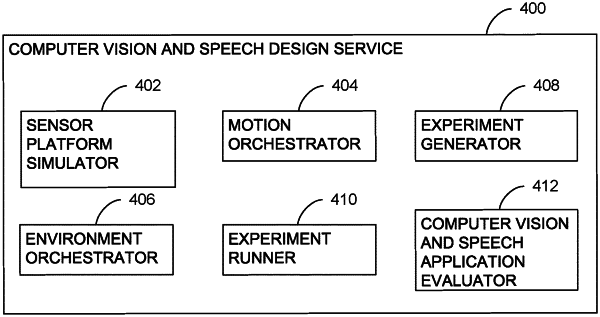| CPC G06V 10/774 (2022.01) [G06F 11/3684 (2013.01); G06F 30/20 (2020.01); G10L 15/01 (2013.01); G06F 18/214 (2023.01); G06F 2111/18 (2020.01)] | 20 Claims |

|
1. A method for selecting a hardware configuration in a simulation of one or more hardware configurations for a sensor platform, the sensor platform comprising one or more virtual sensors and having an environment simulation generated for one or more virtual environments, the method comprising:
generating a motion profile simulating motion of the one or more hardware configurations within the one or more virtual environments;
generating synthetic experiment data for the one or more hardware configurations having the simulated motion within the one or more virtual environments, wherein the synthetic experiment data comprises inertial measurement unit (IMU) data;
simulating movement of the one or more hardware configurations with the simulated motion in the one or more virtual environments;
applying an object tracking service to the simulated movement of the one or more hardware configurations with the simulated motion in the one or more virtual environments to determine performance of object tracking by the one or more hardware configurations;
determining disparity data of a simulated hardware configuration compared with a ground truth for the simulated hardware configuration;
determining the disparity data exceeds a variance threshold from the ground truth; and
based on the disparity data exceeding the variance threshold, directing an artificial intelligence (AI) application to run subsequent testing of the object tracking service against a different synthetic scene, motion, or hardware configuration.
|